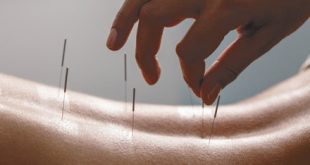By Theresa Lynch, M.S., OTR/L, C.L.T.


Lymphedema may be caused by injury, infection, chronic venous insufficiency, the removal of lymph nodes after cancer treatment, after cancer radiation treatment, chemotherapy, surgery, burns or trauma. Lymphedema occurs when your lymph vessels are unable to drain lymph fluid adequately. Lymphedema can also be a genetic condition, called primary lymphedema, and is the result of the malformation of vessels from birth, which may not appear until adulthood. The gold standard and most effective treatment method for lymphedema is called complete decongestive therapy (CDT).
Lymphedema is a progressive condition that occurs when the lymphatic transport system falls below the capacity needed to handle the fluids that normally leak from the blood vessels into the lymph system. The accumulation of fluids leads to the swelling of subcutaneous tissue because of obstruction of lymphatic vessels or lymph nodes. Any disease process that interferes with or disrupts the normal mechanical process by which the lymphatic system collects, filters, and returns lymph fluid back into the circulatory system can result in excessive accumulation of lymph fluid in the area affected by the blockage. Since the arterial capillaries continue to function normally and deliver fluid to the tissue, the volume of fluid increases significantly until the venous capillaries are no longer able to compensate for the defective lymph vessels. At the point where drainage has been reduced by 80% or more, symptoms of lymphedema become apparent.
Although lymphedema can develop in any area where the normal flow of lymph fluid has been interrupted, it is most seen in the extremities and almost always takes place at the most superficial level of the lymph vessels, namely under the skin (subcutaneous). Other areas where lymphedema can develop include the head/neck region, chest, body cavities, pelvic region, and genitals. When lymph fluid accumulates due to blockage, it can reduce the amount of nutrients that reach the cells and can interfere with wound healing, which results in increased risk of infection.
There are varying degrees of severity of lymphedema, from mild to extreme swelling which can cause life-threatening complications. Initially, patients may notice that one limb is slightly larger than the other.
Approximately 50% of patients with mild lymphedema report feelings of heaviness or fullness in the affected limb. As the swelling progresses, it may become difficult to fit clothing over the affected limb. Eventually, the size and weight of the edematous limb may cause fatigue, embarrassment, and have a significant impact on the quality of life. Maximal girth of the limb is usually reached within the first year of onset of symptoms. The earlier the diagnosis of lymphedema is established, and treatment initiated, the lower the risk of developing a large, distorted limb and multiple skin changes.
Lymphedema may develop immediately after many surgical procedures. It is usually mild and resolves within a couple of weeks. If lymphedema develops approximately 6-8 weeks following a surgical procedure or radiation therapy, it also typically resolves within a few weeks following treatment for the lymphedema. The most common form of lymphedema, however, develops very slowly over time and may become manifest many months or years following the original procedure. Regardless of severity, lymphedema must be treated as soon as possible and as aggressively as possible to prevent further complications. Treatment of lymphedema is most effective when it is initiated at an early stage.
Lymphedema differs from edema. Edema is a secondary symptom of an underlying medical condition that is the result of too much fluid being released from the capillaries into the tissue, overwhelming the capacity of the lymphatic system. In lymphedema, on the other hand, it is the lymphatic system itself which is compromised. The arterial capillaries continue to function normally and continue to release their fluid in the interstitial spaces, but that fluid is not being drained away from the site because of a “faulty” lymphatic system. Although compensatory mechanisms may develop at early stages of faulty drainage, at some point, the increasing lymph load becomes too great for any compensatory mechanisms to be effective. Therefore, lymphedema may be latent for many years before the symptoms become evident.
If lymphedema is left untreated, complications ensue and may result in:
. Repeated infections, such as cellulitis (skin infection) and lymphangitis (inflammation of lymph vessels)
. Progressive trophic changes to the skin such as skin thickening, hyperkeratosis (scaly, warty growth), deepening skin creases, and difficulty picking up skin folds between the fingers or toes
. Progressive decline in quality of life and activities of daily living
If you or a loved one has been diagnosed with lymphedema, it’s critical to learn everything you possibly can about this condition so that you can make informed decisions about your treatment. The International Society of Lymphology’s classification system that is used by doctors to grade the severity of lymphedema. Other underlying medical conditions that may be confused with lymphedema and must be taken into consideration in the differential diagnosis of lymphedema.
The primary goals of treatment for massage patients with lymphedema with Theresa Lynch, Certified Lymphedema Therapist include:
. Control swelling and other symptoms associated with the condition.
. Promote the flow of lymph and prevent secondary complications.
. Help patients to better cope with the psychological aspects of lymphedema.
. Prevent progression of lymphedema.
. Enable patients to lead a reasonably good quality of life.
Understanding the standard treatments – and the treatment options – is critical for successfully achieving the goals of treatment for lymphedema.
Theresa Lynch,
M.S., OTR/L, C.L.T.
Theresa Lynch is a Certified Lymphedema Therapist with over 300 hours of specialty training in CDT and treating lymphedema everywhere it occurs. Please call 239-776-4001 with questions or have your physician fax a referral to 949-757-6651
www.lynchlymphedema.com
239-776-4001
Theresa Lynch, Certified Lymphedema
Therapist, LLC
1044 Castello Dr., Suite, 213
Naples, Florida 34103
 Southwest Florida's Health and Wellness Magazine Health and Wellness Articles
Southwest Florida's Health and Wellness Magazine Health and Wellness Articles

